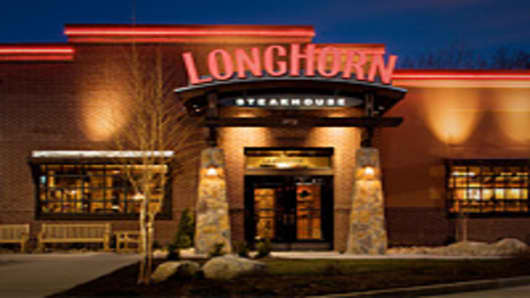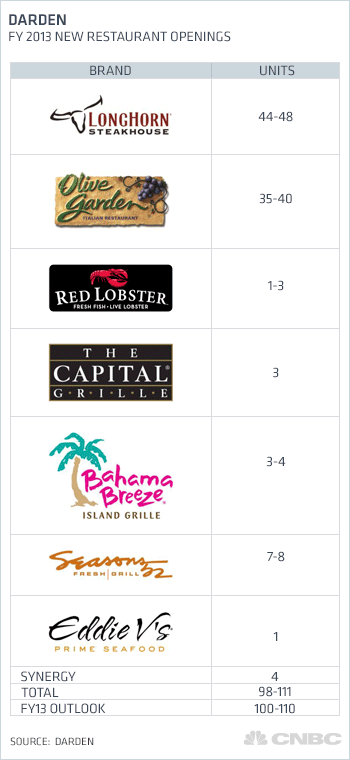"There is no question that we are adding more restaurants today than five years ago,” says Bill Taubman, chief operating officer at Taubman, in a written response to CNBC.com. Restaurant openings over the past year include The Cheesecake Factoryand Texas de Brazil at City Creek Center in Utah and Plan B Burger at Stamford Town Center in Connecticut.
Simon Property Group , the largest public real estate company in the nation, is also opening up more casual restaurants than five years ago. It is working on multiple deals.
“We believe these restaurants bring a great deal of value to our properties and serve as a critical component of the tenant mix,” says Les Morris, a spokesman for Simon Property, in a statement to CNBC.com. “There are a number of advantages to having a strong restaurant line-up at our malls: they help to brand our properties, they bring traffic to the malls and they keep shoppers at the malls longer than if there were not restaurant options."
You don’t have to look very far to find interest from the big eateries. (For more: Cramer's 3 Restaurant Stocks Poised to Rally)
Darden Restaurants, which owns casual and casual-plus chains such as the Olive Garden and The Capital Grille, is scoping out new locations. The company is in the process of opening up more restaurants now than it did last year, and it recently acquired another chain, the Yard House. (See graph to the left.)
"We have been tearing down hotels and things like Circuit City. We have a few sites where we have built on mall property," says Darden Restaurants spokesman Rich Jeffers. "We are finding space in existing malls."
At the malls, he says Darden will do tear downs and rebuild the space at its own expense.
Opening up restaurants, says Stifel Nicolaus Vice President and REITS Analyst Nathan Isbee, gives people another reason to not shop online and get out of the house. It’s what he calls part of the gentrification of mall property.
”The landlords want to get people to think of the regional malls as more than just a place to buy apparel. They want to give people more of a reason to want to stay longer and spend more money," says Isbee.
It could be a winning strategy as classic mall retailers such as Gapand Abercrombieclose stores and create more space.
Bringing in a restaurant will not save a dying mall, but Isbee says it will certainly generate business.
General Growth has been taking the concept of the “shopping experience” a step further. It’s also been adding supermarkets and movie theaters to its malls over the past few years.
That’s a good strategy to fill the holes left by retail chain stores, says America’s Research Group Chairman Britt Beemer.
“I don't know of any apparel retailer that is expanding," says Beemer.
But, a new hurdle may be emerging for the malls — one that may cause hunger pains. A report out this week finds Americans are eating out at a slower rate. The NPD Group, a market research firm, trimmed its restaurant traffic forecast to flat for the next two years versus the one percent gains originally forecasted.
Within this forecast there is an encouraging sign, the average amount diners are spending rose 2 percent in the spring.
“Consumers may not be flocking to restaurants in droves, but they are going out, that’s good news,” says Bonnie Riggs, NPD restaurant industry analyst. “We’re also seeing that when they do dine out, they are trying new offerings, spending a little more and not relying totally on deals.”
Questions? Comments? Email us at consumernation@cnbc.com. Follow Stephanie Landsman on Twitter @StephLandsman




